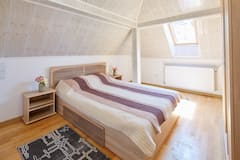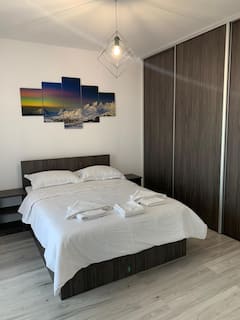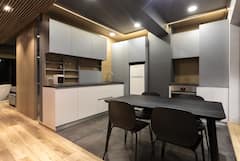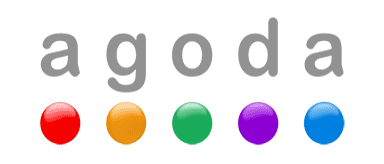Transylvania is a surprising destination. A very discrete province of Romania surrounded by the horseshoe of the Carpathian Mountains, it has the ambiance of the Swiss Alps but retains a medieval character to its countryside, and the language has the musical lilt of Italian. Astonishingly, Transylvania’s most famous fictional character, Count Dracula, doesn’t actually feature much here: ‘He’s not real!’ was the baffling explanation I was given for this. Romania is alone in the European Union in still having some functioning medieval landscapes which have great cultural, social and environmental significance but are struggling economically. The challenge is to preserve the unique mountain landscape while opening it up for use by visitors in a way that respects and protects the villages and the traditional way of life.
Village life and Romanian wine

Romania has quite a good reputation when it comes to wine, but it’s not easy to find it for sale in the UK.
I tried a spot of wine tasting at a small local winery, IEPURE Winery, in the Ciumbrud hamlet on the way to our village destination of Rimetea. The winery looked just like someone’s house because basically it was, with some tell tale silvery wine vats in a large cellar down a few stone steps.
The wine here was sold in large plastic containers at 50 RON or 13 USD for five litres (1.32 gallons), which is extremely cheap. Most of the grapes used seemed to be German varieties like Riesling and Gewürztraminer but there was a merlot too. The rosé was incredibly floral and delicate and smelt of fresh roses and fruit.
We stayed at a new guesthouse in the village of Vidra, which looked very much like a Swiss chalet in its gorgeous alpine setting with a sloping roof and geraniums in window boxes. Nearby is a small waterfall and it’s not too far from a small glacier either. A rock known as Snail Rock is covered in the fossils of cephalopods, giving testament to the fact that this part of the world was once covered by water. It’s an idyllic spot on a working farm surrounded by the most beautiful mountain scenery.
Food in Transylvania

If you are travelling off the beaten track you will be eating mainly home cooking in your guesthouse or small hotel. The food here is incredibly fresh and tasty, if not sophisticated. There are few restaurants up in the mountains but in local cafes you might expect to be served a dinner of something like pork steaks, potatoes and cucumber and tomato salad. Homemade corn polenta boiled with fresh sour cream with salt and pepper is another hearty local dish and there is always lots of fresh bread on offer. I can recommend you try the local plum brandy too, which is delicious.
Alpine crafts

High in the Transylvanian mountains, off surfaced roads and into the alpine interior, lives Triain, a local wood craftsman. The air is clear and the landscape very beautiful here, but this is a very remote place to live. Triain Badau lives in the hamlet of Badai. People are often called after the places they live in here and this was a common practice all over the world in times gone by.
Triain lives here with his parents, and runs a small farm where they make hay the old fashioned way, cutting it by hand and putting it into pointed haystacks supported by long poles, a real feature of this part of the world.
Triain is a craftsman in woodworking, and uses homemade woodworking tools to make alpine horns from spruce. He also makes mugs and bottles and churns, all without the use of any mechanical help. He has a pedal operated shaving horse.
Triain’s speciality is making alpine horns in the same way they were made generations ago. Originally, alpine horns were used to communicate across the mountains. You could let people know about some event across the valleys, maybe a birth, a death or a gathering by the sound from your horn. You can buy these horns directly from Triain or just ask at the local tourist information in Cluj Napoca and they can tell you how to find some.
You might be interested in these Airbnbs!
Transylvania and the legend of Dracula
Transylvania means literally, ‘the land beyond the forest,’ but for most of us, Transylvania is inextricably linked to Bram Stoker’s fictional character, the bloodthirsty Count Dracula. At least it is linked in the minds of most people in the world, apart from the people who live here. To them, Transylvania is their home and Dracula just a story made up by a writer, albeit one based on a real and very fearsome Transylvanian count — the so called Vlad the Impaler.
The castle here, which most people associate with the Dracula story, is Bran Castle as it is the only one that really fits the description in the book.
Bram Stoker’s character, Dracula, is a Transylvanian Count with a castle located high above a valley perched on a rock with a flowing river below, and this is just the setting for Bran Castle.
However, Transylvania is littered with amazing turreted castles which all look like an illustration straight out of a fairy story, and we chose to visit Banffy Castle which, although now a ruin, and on an endangered buildings list, is slowly being restored to its former glory. It is an impressive site and makes for a great day out. There are many more castles to be explored here too.
Forest still covers over a quarter of Romania and is inhabited by wild bears, deer, lynx, chamois and wolves, and about a third of the country consists of the Carpathian Mountains, also known as the Transylvanian Alps. The rest of the country is covered in vineyards orchards and fertile farmland. Transylvania currently has few visitors, so now is a great time to visit and I hope that one day I may have the opportunity to return to this fascinating place of such history, culture and stunning natural landscapes.
History
Get Trip101 in your inbox
Unsubscribe in one click. See our Privacy Policy for more information on how we use your data






















Create an account to